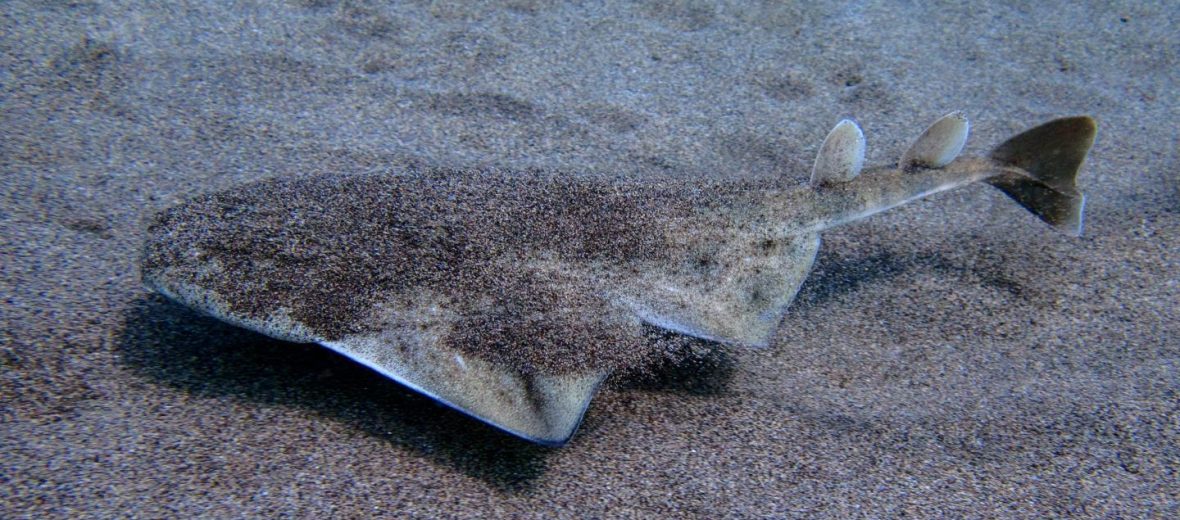
The angelshark, aka monkfish, were once quite widespread in the coastal waters of the northeastern Atlantic Ocean. There are 23 known species of angelsharks. However, due to the threats of residential and commercial developments; tourism; human-based recreational activities; and overfishing, these cool creatures are now listed as Critically Endangered by the IUCN. Their populations are also decreasing.
First the Stats…
Scientific name: Squatina squatina
Weight: Up to 180 lbs.
Length: Up to 7.9 feet
Lifespan: Up to 35 years
Now on to the Facts!
1.) With their flattened body and enlarged pectoral and pelvic fins, as well as their tendency to stay near the ocean floor, these creatures ar often mistaken for rays.
2.) These sharks are nocturnal (active at night).
3.) They are solitary ambush predators that typically bury themselves with sand and await passing prey.
4.) Angelsharks prey on bony fish, invertebrates, and skates. Some even take sea birds.
5.) This shark is now considered locally extinct, for the most part, across most of its northern range, and the possibility of the remaining decimated subpopulations are living on the edge due their slow reproduction rate.
But wait, there’s more on the angelshark!
6.) Other names for these sharks are angel, angel puffy fish, angel ray, angel fiddle fish, angelfish, escat jueu, fiddle fish, and monk.
7.) Females are aplacental viviparous (young hatch inside the mother’s uterus and are nourished by a yolk sac until birth).
Did you know…?
In 1758, Swedish natural historian Carl Linnaeus, aka the “father of taxonomy,” first described these sharks.
8.) A female will birth up to 25 pups, every other year.
9.) They prefer the temperate waters of the northeastern Atlantic Ocean.
10.) Angelsharks can be found at depths of up to 490 feet and some even venture into brackish water estuaries.
But wait, there’s still more on the angelshark!
11.) Known parasites include: the tapeworms G. angeli, Grillotia smaris-gora, and Christianella minuta, the fluke Pseudocotyle squatinae, the monogenean Leptocotyle minor, and various isopods.
12.) While not known for their aggression towards humans, they can deliver a painful bite if provoked and/or cornered.
13.) These sharks are used as a food source and are served dried, fresh, or salted; and marketed under the name “monkfish.”
14.) Angelsharks are preyed on by great white sharks, broadnose sevengill sharks, and northern elephant seals.
Now a Short Angelshark Video!
Be sure to share & comment below! Also, check out the Critter Science YouTube channel. Videos added regularly!
Want to suggest a critter for me to write about? Let me know here.
Some source material acquired from: Wikipedia & IUCN
Photo credit: Inland Fisheries Ireland



